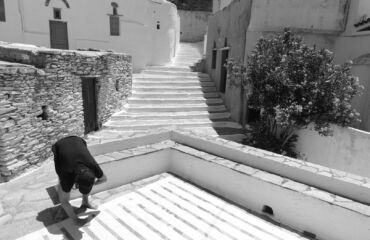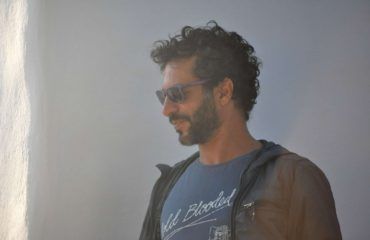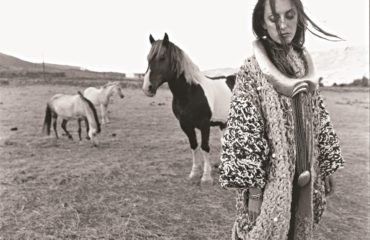“It’s not what you look at that matters, it’s what you see…”
There are always many ways to see. There are some people who look just for looking. Others look for something very specific. There are also the ones that see what they’d like to see. The hardest thing, though, is to show through your eyes what “hides” in every corner, every landscape or every human being, in order that everyone around you could see it. This is not the only thing that Stelios Papadopoulos succeeds with every shot. Maybe because he doesn’t fight pretentiously for a goal, but he lets his idol lure him. Or it’s because he adds a jazz touch to his every click. Whatever the reason, it is certain we want to learn more about him…
By Popi Kouzoupi
1.Stelios, talk to us first about your childhood. Where did you grow up? What were your first dreams about your future career?
I was born and raised in Athens. In the Acropolis area. I’ve been curious about the world since I was a kid, which, as I was growing up, was translated into an exploratory trend for most things around me. In the summers we left the city and we went to a village just outside Lefkada where for almost three months we literally lived in front of the sea. My father loved photography, so he got the chance to take photographs often.
I remember watching him set up the tripod. Adjusting the camera, changing lenses and filters, as if it were some secret scientific process. As I was growing up, this process started to attract me more and more, so my father slowly began explaining to me the basics of the photographic process. When I was thirteen, I bought the first reflex camera with which I started taking pictures. But that didn’t last long. Five or six years…
Coming of age, the curiosity to explore other things and the directions that existed then in my mind made me lose interest and gradually leave it completely. I was involved with the camera again, a decade ago when I moved to Tinos. Reconnecting with something that had to do with my childhood was mesmerizing. The emotion, the curiosity, the joy, the exploration, the flame were all there, as if it hadn’t been a day since I left it. So I gradually started taking pictures again. Initially for me and for my own projects and then, in the last 6-7 years professionally.
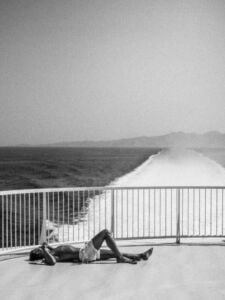
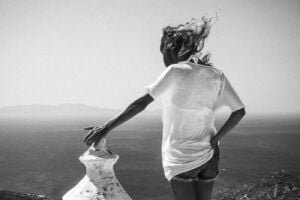
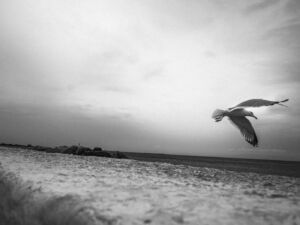
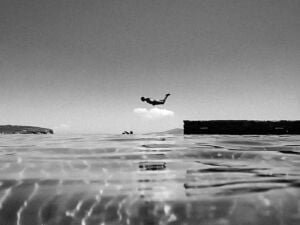
2. How much did the music, you studied, affect the art of photography you’ve long served? Does it have an invisible melody of every landscape, any object that emits it perhaps to the one who would like to “hear”?
I’m sure there’s a lot of connection between these two arts. The general principles are the same. What applies to acoustic perception also applies to optics. Structure, balance, rhythm, form are elements that exist both in a piece of music and in a photo. Because of my relationship with music, it might be easier to recognize them in photography and work with them, as they already exist in my perception. I just need to translate them into the visual language. As far as the invisible melody is concerned, I think that’s what we emit towards the object and not the one that the object emits to us. In other words, we see more in things what we reflect on them and not an objective quality which they may have on their own.
So if we get five photographers to photograph a field of flowers, we’ll get five different versions of this field. Five different melodies. One field can be erotic, another melancholic while a third might be dark etc. Although we talk about the same object. That’s what makes the photographic process interesting. The fact that the shooting is perception.
3. In recent years you have chosen Tinos as your place of residence. How and when did you decide to settle on the island? Was there a prior relationship with the place?
I left Athens in 2010. I had decided to leave town years ago, and at that time given the circumstances I was able to do it. But I didn’t have a specific destination in mind, except that I wanted to live on an island. When I decided to leave, I got on a ship and started wandering around the Cyclades. I knew I wanted this environment as a life frame, so I started exploring various islands. I had already visited five or six when I came down to Tinos. It was January and I was chilled to the marrow. I started riding my motorcycle on the island. In two days, I decided I’d stay there. In three days, I’d already rented the house I’m still staying in.
I don’t think I chose Tinos. Tinos chose me. I still don’t know why.
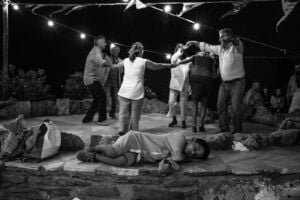
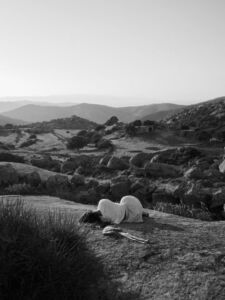
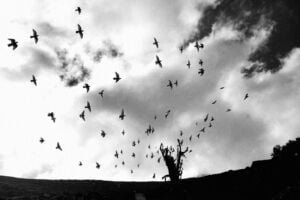
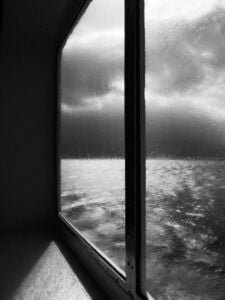
4. Would you like to tell us a few words about everyday life on the island? How is life there during the summer months and how is it when the scenery takes the colors of winter?
I think that everyday life on the island has two basic versions. The tourist-summer version and the winter one. As the island’s economy is mainly based on tourism, for the majority of residents their everyday life in summer is mainly their job. And that starts from Easter to October. It’s the most extroverted period for the island.
Everyday life in winter is much more different. Both introverted and internal. The place returns to its normal rhythm, the locals rediscover time for their families and friends, relationships become tighter, closer, creative time is longer and the time passes by more quietly and more relaxing. For others there is time for fishing, for travelling, for holidays, for activities on the island, for traditional dances, for walks on the trails among the villages etc. All these happen, until the tourist season begins gradually, when everyone saves their strength and prepares for the summer marathon…And so the circle repeats.
5. Do you think Tinos has something different about photography than other islands? How does this if it exists, affect and shape the photographic look?
Due to various circumstances of recent decades, Tinos has managed to maintain relatively unadulterated landscape and culture from unreasonable tourist development. Consequently, it still keeps the elements of authenticity strong. Its landscape is characterized by austerity and rigour but at the same time it also retains a deep kindness and sense of measure. Another decisive element is the circumstance of the norther which lets there be nothing but what is strictly necessary in the Tinian landscape. Which further strengthens the sense of the understated that the place has.
Finally the most decisive element of all for me is light. Hard, penetrating, almost laxative, renegotiates the nature of all the things that live beneath it. From the deep line of the horizon to the curve of an arch, the light of Tinos redefines things with a value almost metaphysical. So all these elements, as elements that influence aesthetic perception, it is almost inevitable not to pass on to the form, the frame and the very subject of a photograph.
6.The public is interested in knowing what things you work on photographically. What shots do we wait to see from you?
As far as my personal work is concerned, I want to do a retrospective exhibition this summer using material I have collected from Tinos and the Cyclades over the last 10 years. There’s probably going to be an album accompanying, with all the collected work. At the same time I work on another personal project which will come out later. As far as the island is concerned I continue to work with the architectural photography, the photography of interiors, residences and hotels as well as wedding photography, a field that gradually develops at a very remarkable level in Tinos, as well.
7. Describe Tinos with 3 adjectives.
I’d rather do it with three elements:
Light, horizon, wind.
8. Tinos ABOUT has been presenting the island and its development path for years. You, as a resident, tell us what do you see that has changed in the last decade on the island? How would you like to see your favorite place evolve?
I’m sure a lot of things have changed in the last 10 years in Tinos. The starting point of these changes is mainly the recent tourist development. After decades when the island was intertwined with internal and religious tourism, the economic crisis changed this balance, making professionals and local operators turn to foreign markets as an alternative.
This resulted to the opening of a door that until recently was relatively closed. With its positive or even negative aspects of course. Due to the dominant nature of the religious tourism in previous decades on the island, Tinos had managed to protect itself from the rapid tourist development that has existed on other islands in the same period. In other words, it has so far managed to maintain to a large extent the authenticity of its villages, the purity of its landscape, the preservation of its architectural identity and the characteristics of its local culture.. And that’s an advantage that still exists to a large extent.
In recent years there have been several new business initiatives, cultural actions, festivals, promotion of gastronomy and the island’s culture as well as a successful effort to expand the tourist season, with new activities and events that are a good reason to visit the island off season, as well.
There is no doubt that tourism supports the local economy and creates a framework for growth in many sectors and fields, as a place has to evolve and look forward. I hope that these steps will be taken in Tinos with a proper judgment and deep knowledge of its natural and cultural capital, so that a culture of centuries can integrate the new elements, while protecting its heritage and maintaining the uniqueness of his identity.
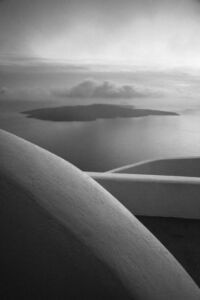
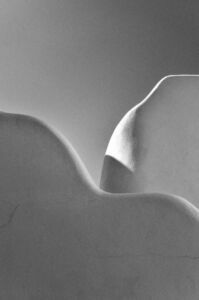
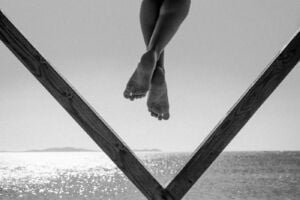
9. Someone would book tickets to go to New York for a photo exhibition. Do you think that our country and by extension Tinos can be such a pole of attraction?
I think there is still a lot of distance to be covered in Greece, in relation to photography. Especially if one is talking about New York as a reference point. But if the content of the exhibitions and the events that are made is good, a Greek island could clearly act as a complementary lever to book a ticket from abroad and find themselves in Greece for such an event. Especially in Tinos, which has a long tradition of art production, I think there is a lot of room for such initiatives. Something like this has already begun for a few years in Antiparos, with the International Antiparos Festival, a promising effort that draws more and more attention, both from the inside and from abroad. So, why not see something like that in Tinos too?
10. Do you have a favorite place or favorite spots in Tinos? And if so, what does that mean to you?
Every village, every chapel and every path has its peculiarity on the island. Especially if someone has walked them step by step and has experienced it up close. Depending on the mood, the weather or the season, I prefer from the wilderness of Koumelas, to the rocks of Livada and from the top of Xobourgo to the magnificent simplicity of Lychnaftia.
But if there was a favorite spot on the island, that would be the rocks in front of my house. I think that lying there in the summers, I’ve chatted with the sky.
11. Give us a description from the photo of the future. What would a picture of the place look like 15-20 years from now?
I wish it was a picture that still retains the unadulterated beauty of the landscape, its wildness, its simplicity, its measure as defined by its own natural elements, to contain respect for tradition while embracing the course to evolution, to enclose more life suggestions other than tourism, to still have the hearty smile of the Tinians, their love for their place, their countless festivals and to be a picture full of wind, saltiness and the Holy light of the Cyclades.


 Ελληνικά
Ελληνικά 
